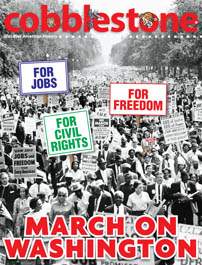Uncategorized
The March on Washington: What to Read
For Adults:
William P. Jones, a labor historian who teaches at the University of Wisconsin-Madison, is the author of the forthcoming The March on Washington: Jobs, Freedom, and the Forgotten History of Civil Rights (W.W. Norton, July 2013).
Placing the 1963 march in its longer historical context, Jones carefully reconstructs the role of African-American trade unionists in laying the groundwork for the demonstration, the support that organized labor gave to the march, and the economic dimension of the civil rights struggle of the 1950s and 1960s. Many earlier accounts of the march – and, we predict, much of the coverage that will soon appear in the media as the 50th anniversary approaches – overlooks or minimizes the march’s labor connection. Jones’s study, which will appear this summer, offers an engaging analysis of the relationship of organized labor and the civil rights movement and highlights the role played by union activists behind the scenes and on the front lines of the struggle for equality.
For Children:
 The February 2013 issue of Cobblestone, an illustrated American history magazine written for fourth and fifth graders, explores the March on Washington – the larger context, the key figures (A. Philip Randolph, Bayard Rustin, Martin Luther King Jr., John Lewis, Roy Wilkins and others), the march’s demands, and much more. The issue makes clear that labor issues and civil rights issues were both on prominent display in the march’s demands; three labor historians – Alex Lichtenstein, Kevin Boyle and Eric Arnesen – are among the contributors to the issue. Two long-time labor activists – Norman Hill and Velma Hill – who were organizing on the ground that day in August 1963, offer their memories of the event.
The February 2013 issue of Cobblestone, an illustrated American history magazine written for fourth and fifth graders, explores the March on Washington – the larger context, the key figures (A. Philip Randolph, Bayard Rustin, Martin Luther King Jr., John Lewis, Roy Wilkins and others), the march’s demands, and much more. The issue makes clear that labor issues and civil rights issues were both on prominent display in the march’s demands; three labor historians – Alex Lichtenstein, Kevin Boyle and Eric Arnesen – are among the contributors to the issue. Two long-time labor activists – Norman Hill and Velma Hill – who were organizing on the ground that day in August 1963, offer their memories of the event.
Information about the March on Washington issue of Cobblestone can be found at http://www.cobblestonepub.com/magazine/cob/, including information about how you can get the issue.